In the spring of 2023, a five-day sale was held in Paris to auction off more than 10,000 objects that had made up Venice’s beloved Bauer Hotel. Everything had to go: hundreds of yards of heavy Rubelli silks, wrought-iron terrace furniture, silver champagne buckets engraved with the Bauer Venezia insignia. A smoked-glass mural depicting La Serenissima, which had welcomed guests in the lobby, was dismantled into pieces and sold off. From poster beds and rococo chairs to the room keys, all of the knick-knacks accumulated over a 140-year period were distributed to the highest bidders.
Though the absence of the Central Pavilion in the Giardini will be missed by those attending the 2025 Biennale Architettura, it’s the loss of the now boarded-up Bauer Hotel that stings the most for me. The storied five-star stay on the Grand Canal was an after-dinner staple and the trek along the length of the hotel’s luxurious lobby was a rite of passage for visitors and exhibitors alike. The bar, with the waters of the Grand Canal lapping below the balustrades and an Italian Lady Liberty surveying the action, was the place to see the architecture and design industry’s great and good in conversation over cigarettes and negronis.
Before it was masked by scaffolding and hidden beneath hoardings, the Bauer was a glimpse of the true Venice: an elegant grande dame that could at times seem slightly tired of its own opulence. It was a place where one might have rubbed shoulders with celebrities at the bar, clinked glasses with a sheikha or talked property with a European prince or US tycoon. By the end of the evening, emerging out of the golden foyer, inevitably slightly dazed, it would already be unclear whether any of it had actually happened. The Bauer wouldn’t tell – after more than a century of inviting travellers in, the walls had seen their fill of fantastical events.
The Bauer sailed on until 2019, when its owners, the Bortolotto P0ssati family, announced its sale to US funds, which then passed it on to an Austrian property company, Signa, in 2020. The lagoon seemed to let out a sigh, though it’s not the first time that a Venetian institution passed into the hands of foreign investors. The new owners promptly announced a top-to-bottom renovation in 2022 – cue the auction – and an eventual reopening as a Rosewood-managed hotel.
Little more than six months later, it emerged that Signa was over €15bn in debt and would have to file for bankruptcy. The company had towers under construction in Berlin and Hamburg, and owned prime properties in many global capitals. I was in Venice on the day that construction halted at the Bauer, after Signa stopped honouring its payments. Inclined to snoop, I walked up to the scaffold, which still hopefully advertised the reopening of a “new Bauer” in 2025 as I approached a small wooden door that served as the construction-site entrance.
It was unlocked. Inside, a security guard was dozing in his booth. It was just past 08.00 but nobody was at work. Past the turnstile, I saw the floor that had previously hosted the Bauer’s velvety, low-lit bar and lobby. The entire building, which is made up of a 19th-century palazzo and a modernist annex, had been gutted with only the structural concrete columns left standing. The grande dame looked like an abandoned parking garage.
After a feverish ping-pong match over ownership between multinational investors, allegedly including Bernard Arnault’s lvmh, the property was auctioned for €309m in late 2024 to Mohari, another property conglomerate. The investment that has flowed into the Bauer since 2019 is dizzying and Mohari committed an additional €150m to completing the renovations. My only question is this: for what? I never heard anyone complain about the facilities at the old Bauer. And what will be the result of this expensive saga? Another chain hotel filled with contract furniture?
The Bauer’s valuation is for its prime location on the Grand Canal but also for the position that it occupies in the city’s – and visitors’ – psyche. There’s a further irony to the fact that the very magic that gave the hotel its worth and allure might be destroyed by the renovation that tries to heighten it. It’s futile to blame anyone in particular for the mess. Families want to sell, investors want to buy and architects want to work. But any biennale-goers who find themselves itching for a nightcap and no longer quite knowing where to go might do well to remember the lesson that often – in architecture, as in life – good things are best kept just as they are.
About the writer
Berlin-based Stella Roos is Monocle’s design correspondent and a regular contributor to various global publications, including our sister title Konfekt.
During his second term as US president, Barack Obama joked about the location of his future presidential library. “Some have suggested that we put it in my birthplace but I would rather keep it in the United States,” he said.
This gag was at the expense of his eventual successor, Donald Trump, who had done more than anyone else to propagate the fantasy that Obama had been born in Kenya and was therefore ineligible to hold the office of US president. The Obama Presidential Center is now under construction in Chicago. Trump has already proclaimed it as a “disaster”, apparently because of the overhiring of “woke” people and the engagement of insufficient numbers of the “good, hard, tough, mean construction workers that I love” (the Village People thing runs deep).
Trump might believe that it is a bit early to start contemplating his own presidential library. He is only six months into his second term and has yet to rule out seeking a third, whatever the objections of the pettifogging naysayer that is the Constitution of the United States. However, a placeholder website exists (trumplibrary.gov). He also has money to spend, in the form of settlements that he has won against media organisations that have connived to prevent his fellow citizens from fully appreciating the majesty of his rule. There’s Meta, which kicked him off Facebook and Instagram in 2021 for the trifling infraction of attempting to overthrow the constitutional order by force ($25m [€21.5m]); ABC, one of whose presenters outrageously suggested that Trump had committed a sexual assault worse than a court decided that he actually had ($15m [€12.9m]); and Paramount Global, the parent company of CBS, whose show 60 Minutes had committed the unpardonable affront of editing an interview with former vice-president Kamala Harris ($16m [€13.8m], a meagre fraction of the not remotely insane $20bn [€17.2bn] that Trump was demanding).

Under the terms of the settlements, these monies are to be allocated towards the future Trump library. But what will it look like? Reports suggest that a couple of university campuses in Florida have been scouted as potential locations. Hints have also been dropped as to what one of the star attractions will be: the generous and pure-hearted present of the customised Boeing 747 that Trump accepted from Qatar. This is in spite of the purse-lipped resentment of those who grumbled that it was a flagrant bribe, as though Donald Trump of all people could ever be susceptible to such tawdry blandishments.
But there is no shortage of other possible exhibits. The classified files that Trump diligently lifted from the White House at the end of his first term for safekeeping in the bathrooms of Mar-a-Lago. The portraits of himself paid for with funds from the Trump Foundation – funds that might otherwise have been squandered on frivolous charitable enterprises. The dozens of expensive gifts from foreign governments that House Democrats allege have never been declared to the State Department as per the footling requirements of the Foreign Gifts and Decorations Act but have been judiciously stored so that they can one day be selflessly shared with the American people.
With the project helmed by Eric Trump and Michael Boulos (Tiffany Trump’s husband), it is very difficult to imagine that the current president’s library, when it opens, will be anything other than a tacky, gaudy folly attached to a gift shop stacked with sweatshop tchotchkes. It might even become the first US presidential library to end up declaring bankruptcy.
Mueller is a contributing editor at Monocle and the host of Monocle Radio’s ‘The Foreign Desk’. For more opinion, analysis and insight, subscribe to Monocle today.
The annual July gathering of London’s designers, editors and retailers at the Serpentine Gallery’s summer pavilion has been a longtime tradition for the British Fashion Council (BFC). It’s a moment to toast the end of the fashion season before everyone disperses for their month-long Mediterranean holidays.
However, in recent years, designers were noticeably absent and smiles were forced. Conversations revolved around the post-Brexit issues plaguing the UK fashion industry, with some brands having to scale back operations, while others have shut up shop completely or migrated to cities that promise better infrastructure, such as Milan and Paris. Yet this week, when I walked into the Serpentine Pavilion – a long, timber structure by Marina Tabassum – the mood seemed to have shifted. Aside from the upbeat music, flowing rosé and colourful cakes by Sophia Stolz (who cooked in a surrealist Louis Vuitton gown), there appeared to be renewed hope and even excitement that London might finally get its groove back.
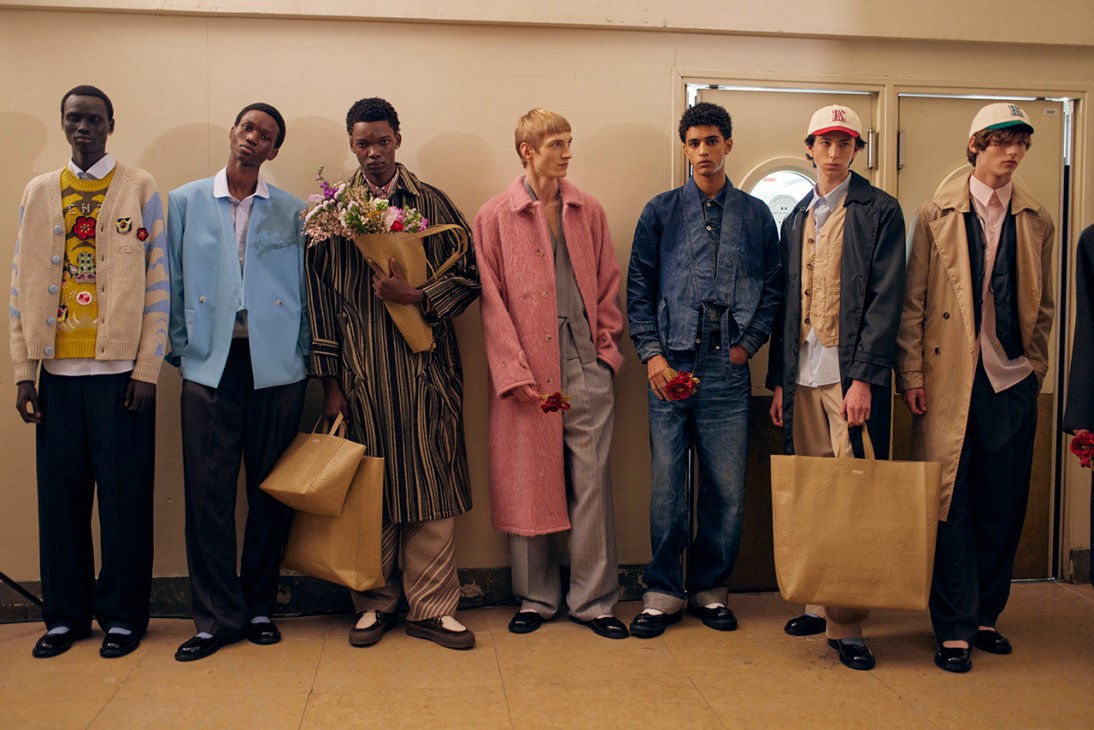
The refreshed outlook and ambition shared by Laura Weir, the BFC’s newly appointed CEO, has spurred a change in spirit. Designers clapped with enthusiasm when she announced plans to waive participation fees at London Fashion Week and to double investments in a guest programme that will help bring back international editors, retailers and cultural commentators. As of now, the most important players in the industry have been flying straight to Milan, given the British showcase’s lack of commercial appeal. Weir – a former journalist and editor – is also turning her focus toward education and finding talent beyond the capital. With increased scholarship funding and a new programme that will take established designers back to their old schools throughout the UK, she hopes to show young people living outside London that a career in fashion is possible for them too.
These are all promising first steps – but what truly reignited faith was Weir’s refreshing honesty. She acknowledged that she has been given a “Herculean” task; that the country’s creative sector is in trouble; and that competition is getting stiffer. “I’ve had conversations with government representatives from Hong Kong, India and the Middle East, and what strikes me is how these superpowers are investing in culture as they build their strategic positions on the global stage,” says Weir. “Some are meeting me to find out more about London Fashion Week and then their governments are funding millions of pounds in building their own. They understand that investment in culture leads to the commercial and reputational success of entire nations. We have all of that in spades – the fashion week, the creativity, the ambition – and yet we are losing talent to Paris, Milan and Berlin because of a lack of infrastructure to support our designers.”
To convince the creative crowd to return to London, nurturing up-and-coming brands is no doubt a vital part of the solution. But a greater link-up with the hospitality and design sectors, which will help make “brand London” more appealing, is equally important, as is spending the same amount of effort to support the journalists, photographers, stylists and CEOs working behind the scenes. Weir’s task is not just Herculean – it’s epic.
Take a trip to Copenhagen, Stockholm or Oslo right now and you will find these Nordic capitals bereft of locals. The great migration of the Scandinavians to their summerhouses is well underway.
But the type of summerhouse that each of the old Viking tribes favours says a lot about them. A Norwegian views theirs primarily as a base for friluftsliv (open-air living), which involves unnecessarily arduous tasks such as hiking, canoeing or chopping wood in preparation for a winter of crosscountry skiing, downhill skiing and – I wouldn’t put it past them – probably uphill skiing too. The Swedes’ ideal summerhouse is a hut deep in the woods, far from other humans, with no running water, electricity or heating – plus a cloud of flying, biting things that lurks just outside the door. An idyllic blend to appease Sweden’s primary national urges for solitude and masochism.
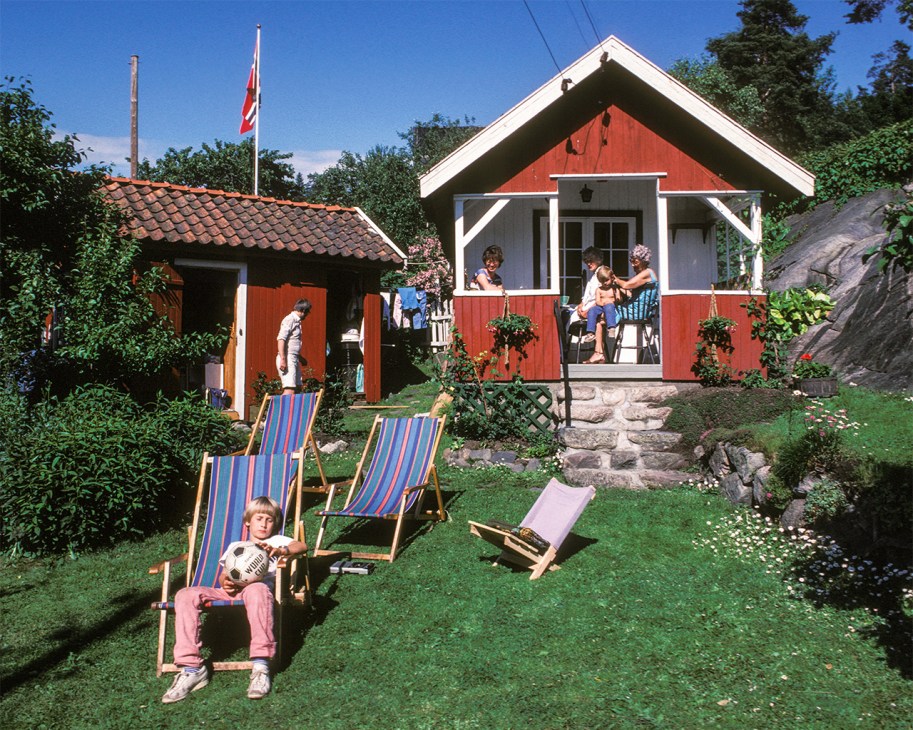
Fortunately for this Denmark resident, the Danes take a more laissez-faire approach. A Danish summerhouse is a place to chill, talk, sleep, read, drink and pursue other leisurely pleasures, ideally within sight of a beach. For that reason, it will be designed with the lowest possible maintenance in mind: the grass can grow long (it being good for biodiversity is the excuse); the mismatched furniture is part of the vibe; and never mind the sand in the kitchen – it’s a summerhouse, after all.
But best of all, when you buy a Danish summerhouse – as I have just done, completing the final piece of my assimilation – it comes with all the furniture, crockery and bedding from the previous owners. What’s in that cupboard? Ah, two decades’ worth of completed wordsearch books and Donald Duck comics. Is that Chinese vase in the toolshed worth anything? The Søstrene Grene sticker suggests otherwise. Will the oven work (no) and what to do with the tiki-style lounge furniture? The answer: give it away on the front lawn. But don’t forget to put the amateurish art back up when the former owner pops round for a friendly coffee.
Yet while a Danish summerhouse might appear a relaxed place, somewhere to escape the relentless narcissism-of-small-differences status race of Copenhagen’s bridge quarters – the truth is that there is still much to decode in the summerhouse landscape.
Location, of course, is a status symbol. It explains why a house two miles (3.2km) from the sea in Tisvildeleje – the once old money, now just money resort on the north coast of Zealand – will cost as much as one right on the beach elsewhere on the island. Meanwhile, Skagen, at the northern tip of Jutland, is the summerhouse resort of choice for the nouveau riche but only for one specific week in mid-July: week 29 (Danes order their year by the number of the week). Locals refer to this as “Hellerup Week”, after the northern suburb of Copenhagen where said nouveaus and social-media influencers otherwise reside.

The west coast of Jutland holds a special place in Danish hearts and so there are tens of thousands of summerhouses nestled here in the hilly sands that stretch from the German border right up to “Cold Hawaii”, as the northern Jutland surf resort of Klitmøller is known (klit means “dune” in Danish; get over it). But I have never understood the appeal of this coast: for about 363 days of the year, the sea is too rough for swimming and relentless winds whip sand in your face. Is there an exfoliating effect that I’m missing?
Recently, the smart summerhouse money has been heading for the previously unloved island of Lolland to the south of Copenhagen. It’s a bet on the influx of German tourists who will be connected to Lolland via the Fehmarnbelt tunnel, due to open in 2029. But I have a soft spot for the South Funen Archipelago, with its dolphins, fishing harbours and a culture and history all of its own.
As a foreigner, I am free to choose my summerhouse location without all the socio-economic baggage, so I am writing this at my dining table (pine, naturally) looking out on a sandy beach, watching the sun set behind the island in the bay as the local ferry chugs steadily across the horizon. It still cost several times my first flat in Pimlico – for a little wooden shack with a supposedly flat but worryingly bowed roof – but it is, for July at least, home.
Could an athlete influence you to buy a leather handbag? Earlier this month, Bottega Veneta tapped Italian pro tennis player Lorenzo Musetti as its latest brand ambassador – a strategic marketing move announced on the day that he took to the court at Wimbledon. In London, he stepped onto the court in a white intrecciato leather bomber jacket for his first (and, sadly, last) game of the tournament. Aged just 23, Musetti joins Bottega Veneta’s prestigious stable of brand ambassadors, including South Korean singer I.N (of boy band Stray Kids) and Australian actor Jacob Elordi. Meanwhile, Wimbledon title winner Jannik Sinner’s walk-on moment featured an oversized Gucci bag. A global brand ambassador for the Italian house since 2022, his victory no doubt raised the spirits of the label’s marketing team as it gears up for a new chapter under Georgian designer Demna.

Fashion brands leveraging athletic prowess to associate themselves with technical excellence is nothing new. Basketball player Michael Jordan arguably pioneered the modern form of celebrity sponsorship when he signed his first deal with Nike in 1984. But the phenomenon has gained traction in recent years, replacing unapproachable Hollywood stars or online influencers with little more than follower counts on their lists of achievements. Who would you rather work with: a temperamental starlet or a punctual athlete? Carlos Alcaraz reps Louis Vuitton, alongside fellow tennis prodigy Naomi Osaka. In 2021, UK wunderkind Emma Raducanu clinched a US Open title along with a Dior ambassadorship, though the French house has since replaced her with Chinese player Qinwen Zheng after Raducanu failed to recreate the buzz surrounding her early-career wins. More recently, Italian brand Canali selected Greek tennis player Stefanos Tsitsipas to be its very first brand ambassador.
Paris’s Summer Olympics pushed the fashion industry’s interest in sports to fever pitch. French luxury conglomerate LVMH was a major sponsor of the games. The opening ceremony saw French athletes dressed in Berluti and performers, including Celine Dion and Lady Gaga, in Dior. LVMH-owned jewellery-and-watch house Chaumet crafted the medals, which athletes received in a bespoke Louis Vuitton trunk, évidemment.

In the contemporary marketing landscape, a pivot to sportspeople for inspiration and brand loyalty makes sense. Yes, models make for beautiful campaigns and we all harbour the hope that we might look like Vittoria Ceretti if only we wore the exact same Gucci dress. But being born gorgeous isn’t a form of merit that can compete with the discipline, dedication and exceptional skills of athletes. For many brands, sportspeople are a way to signal their own technical expertise and the pursuit of excellence.
A brand ambassador can also provide credibility. Swiss luxury-watch label Richard Mille works with French freediver Arnaud Jerald, who breaks records wearing an RM-032 and vouches for the watch’s ability to withstand watery depths in the process. French alpine skier Alexis Pinturault competes with an RM 67-02, putting the timepiece to the test as he whacks poles while slaloming down snowy slopes at breakneck speed. Whether or not office-working Richard Mille watch owners need this level of technical durability is another matter. It’s knowing that, if so desired, these technical marvels could sustain such strain.
Finally, with the fashion industry worth a reported €1.45trn and the sports world valued at €2.26trn, the maths behind this trend of cross-marketing is clear. Gaining visibility in an arena, stadium or on a court is simply a good investment. Sports fanatics are exactly that: fanatics. For many, the agony and the ecstasy of a game or match is akin to a religious experience, their favourite players saints or, in one case, a Sinner. For now, the luxury fashion houses have kept their sights on more elitist sports. But as marketing budgets shrink, brands might become more strategic with who they select to represent them. Whether or not these brand-ambassador deals will extend to the world of darts or video games remains to be seen.
This week I’ve been travelling around Aragón in northeastern Spain, visiting some of the people I wrote about in Monocle three years ago for a piece about the fight against rural depopulation. This vast expanse of yellow scrubland and verdant forests is at the heart of what the local press calls la España vaciada (literally “the emptied Spain”). Since the years of the Franco dictatorship, people have been decamping from their ancestral villages to the big cities in significant numbers. But, as I have learned over the past few days, it’s a mistake to assume that the Spanish countryside is dead and buried.
Spain, of course, has huge demographic issues. Like Italy, where I live, it has a low birth rate and an ageing population. Between 2010 and 2019, populations have fallen in nine regions of the country, including Aragón. There are almost 7,000 municipalities in Spain with fewer than 5,000 inhabitants. Yet visit many villages in Spain today and you wouldn’t know it. In Torralba de Ribota, one of the stops on my trip, I find streets full of children playing and running from house to house. The adults, meanwhile, are knocking back ice-cold Ambar beers in the neighbourhood bar. The community swimming pool is packed as locals cool off from the intense heat.
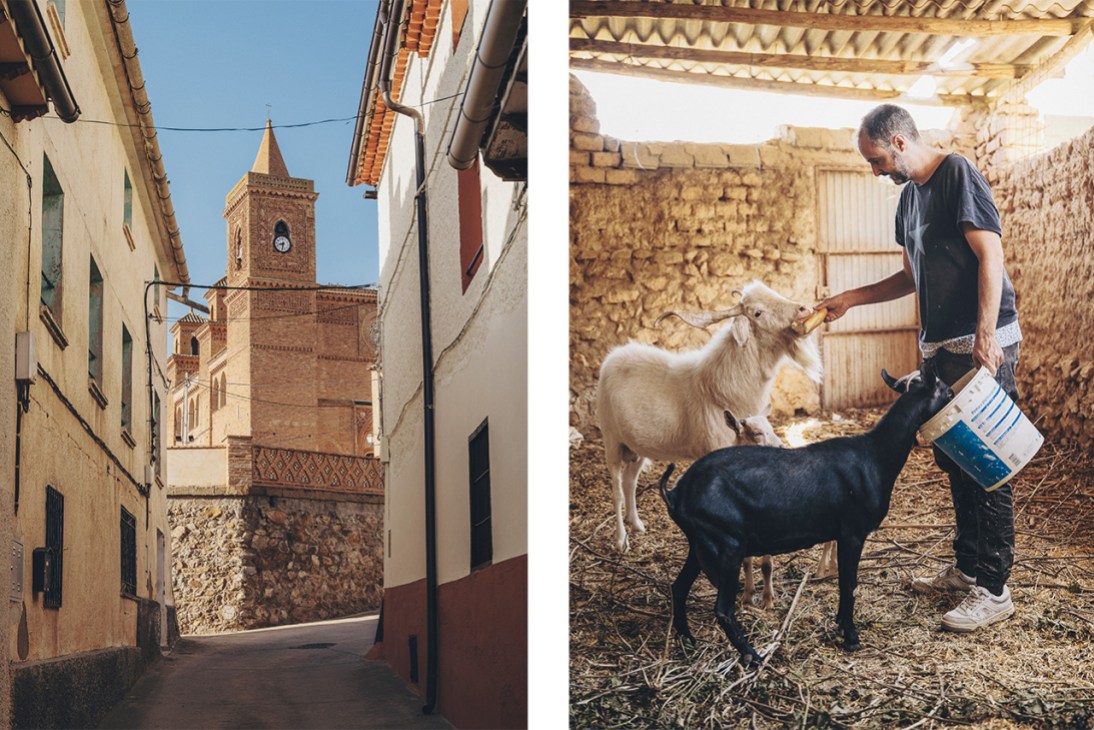
Summer is the peak season of Spanish rural life, when communities across the country hold celebrations called fiestas patronales (patronal festivals). The kids I see running around are the grandchildren of the old-timers who remained; among the others are visitors who own a second house in the countryside but only use it seasonally, having long ago moved to Madrid, Barcelona or Zaragoza. Torralba de Ribota’s permanent residents joke that every year they meet people who swear that they will buy a house and move here – only for the promise to fade away as the air turns chilly come October.
I’m here to see people who have made Torralba de Ribota their home. Many of them had no prior links to the village beyond a knowledge of Lucía Camón, an actress and the founder of an annual cultural festival called Festival Saltamontes, which took place last weekend. Since Camón’s move from Madrid with her former partner and daughter, Torralba de Ribota – which has a population of 169 – has welcomed everyone from a South Korean painter to a stand-up comic and scriptwriter. A couple in their twenties are the latest to move in.
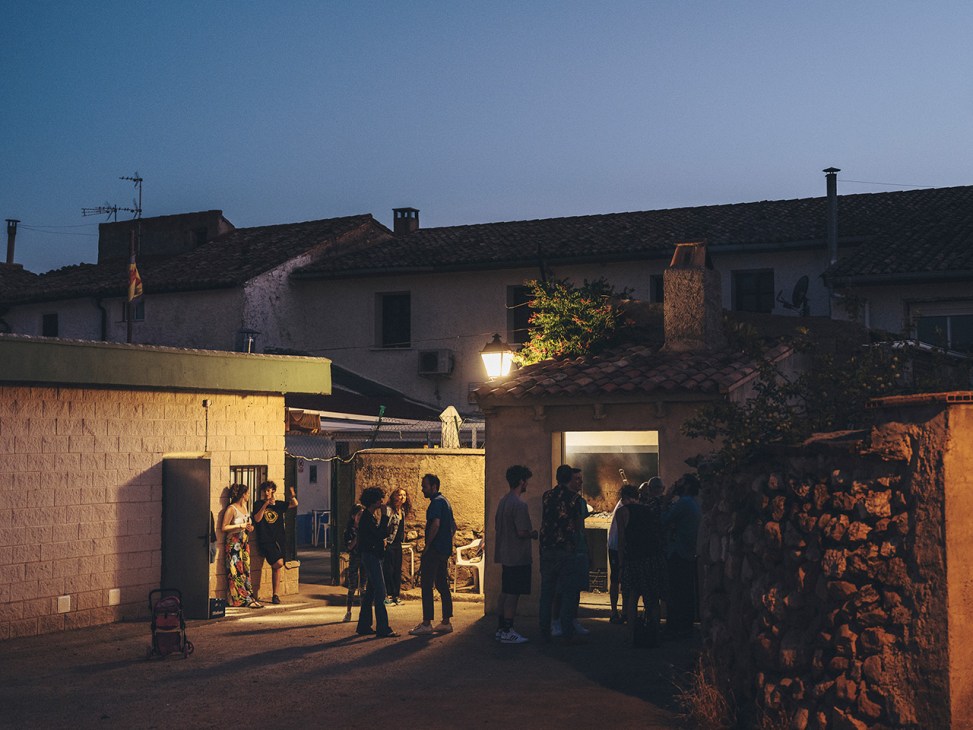
Torralba de Ribota is lucky in many ways. It might seem to be in the middle of nowhere but it’s a short drive from the town of Calatayud, which has several fast trains a day that go to Madrid or Barcelona. In other words, Spain’s main metropolises are within easy reach for a meeting or a retail fix.
While having a creative job that you can do from a studio, workshop or computer clearly makes life in places such as this more viable, comedian Quique Macías says that what the countryside really offers is the chance to take risks. He bought his house for a fraction of what he would have paid in a city and recently purchased a strip of land, where he is now growing pistachios and almonds. He is able to take on only the jobs that he wants to do because he isn’t overburdened with high living costs or an extortionate mortgage.
At a time when the news agenda is packed with stories about geopolitical turbulence and a cost-of-living crisis, village life offers a quieter alternative. This is a place where generations help each other and the pace is slower, more considered. Torralba de Ribota isn’t for everyone and its charms are unlikely to reverse Spain’s demographic trajectory – but its newest inhabitants are proof that another way of living is possible.
Stocker is Monocle’s Europe editor at large. For more opinion, analysis and insight, subscribe to Monocle today.
With a smile, George Koukoudakis, the mayor of Hydra, nods to a heavy bronze sculpture on his desk. The piece, which depicts a boy sitting atop a dolphin, was gifted to the island’s town hall in the mid-1950s by members of a film crew from US film studio 20th Century Fox. They, along with a young Sophia Loren, had disembarked on this Saronic island to shoot Jean Negulesco’s romantic drama Boy on a Dolphin, released in 1957. It was the Italian starlet’s debut English-language role and the first Hollywood production to be shot in Greece. Like many of his compatriots, Koukoudakis believes that the picture not only changed the way that the world saw his country but also helped to birth its tourism industry. “The film had such an impact,” he says. “People saw Greece in a different way and wanted to visit. It was the Hollywood effect.”
A restored version of Boy on a Dolphin has been rereleased in Greek cinemas this summer. Almost 70 years on, the scenes of Hydra in glorious DeLuxe Color continue to stir the soul. Athens, Rhodes and Delos also feature, bathed in sun and set against the shimmering sea. One can imagine the effect that such sights must have had on postwar audiences across the globe. Films have the power to take viewers somewhere new, serving as ambassadors for places – think the New York of Breakfast at Tiffany’s, the Hong Kong of Wong Kar-wai’s In the Mood for Love or even Danny Boyle’s dream-like vision of Thailand in The Beach.
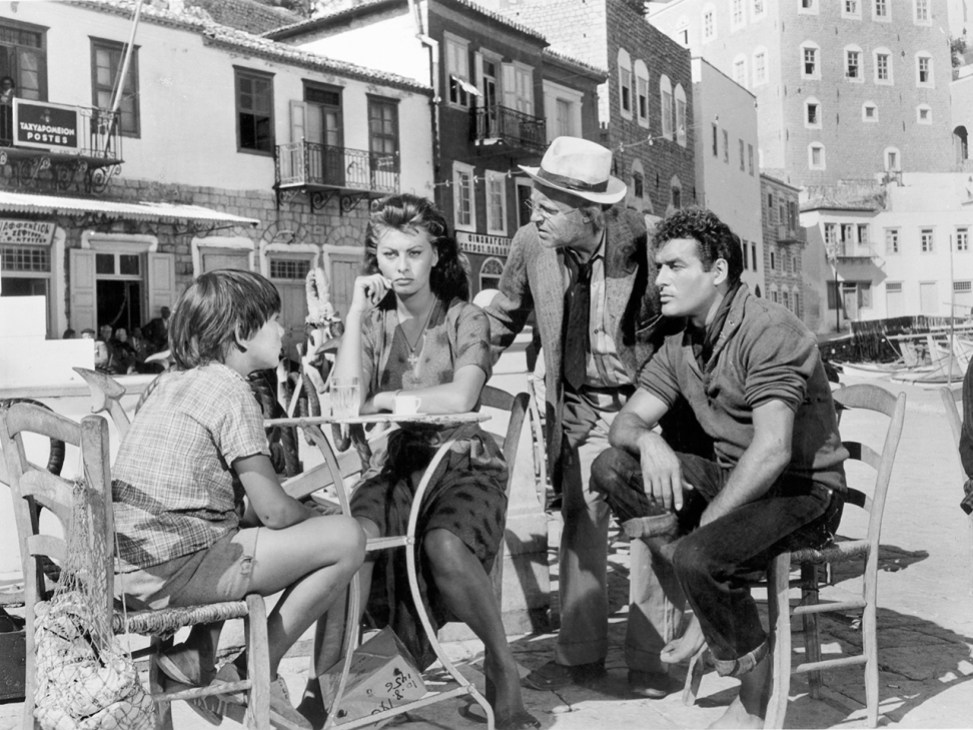
Cinema was once a celebration of travel, journeys and placemaking. If this feels inaccurate today, it’s partly because the industry has become less reliant on location shoots and increasingly mindful of budgets. Generic backdrops or green screens can ape the grandeur of a Manhattan crosswalk at a fraction of the cost. Meanwhile, generous tax rebates are luring productions to vast sets in countries such as Saudi Arabia. And budding filmmakers can always take the short cuts offered by generative AI.
It might be the case that today’s cinemagoers are simply better travelled than postwar audiences and that exotic locales are no longer enough to attract them. But don’t underestimate the ability of a major location shoot to bring fresh energy to a place. In Hydra – an island that’s proudly car-free and has remained relatively unchanged for decades – the power of such placemaking endures. The filming of Boy on a Dolphin is part of its lore and older locals, some of whom were recruited as extras during production, still tell stories of what happened when the big Hollywood crew and actors came to town.
In a memoir by Australian writer Charmian Clift, one of the many artists who flocked to the island in the 1950s and 1960s, she describes how Loren’s star appeal caused a flurry on the minuscule island that didn’t even have running water at the time. It’s a reminder to young directors and filmmakers that there’s a big world out there – and plenty more places to put on the map, far beyond the well-documented boulevards of Los Angeles or Paris.
In the Saronic Islands, Loren-loving Greeks are indulging in nostalgia as they settle into cinema seats to rewatch the remastered Boy on a Dolphin. Go and see it yourself for a taste of Hollywood’s golden age, when filmmakers wanted to whisk you away to somewhere new.
Fitzgerald is Monocle’s North Africa correspondent. For more opinion, analysis and insight, subscribe to Monocle today.
The baguette is a unique French icon. It would be gauche, however, to compare this humble yet noble loaf to a film star, a king or a celebrated artist because its appeal lies in its perfection of ordinariness. In this way this stick of bread, which typically measures about 65cm in length, is also a design classic in a slender pantheon.
It is a robust and unchanging doughy redoubt in a world in which fads and fashion have eagerly sought to reinvent the culinary wheel and deconstruct the gastronomic classics so that we can all, à les Américains, have an order of everything on the side. But no: the baguette offers a reassuring shrug. It is what it is. The traditional baguette is made from wheat flour, water, salt and yeast. It’s the sort of culinary product that contains so few ingredients that its elements have nowhere to hide in its making and then in the final, joyous eating. The boulangers apply their scrutiny and formidable skills to these constituent parts, which come under some 230c of heat.
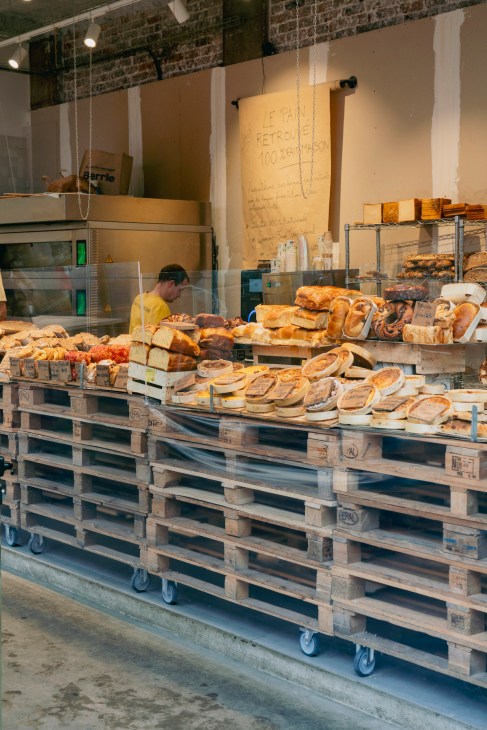
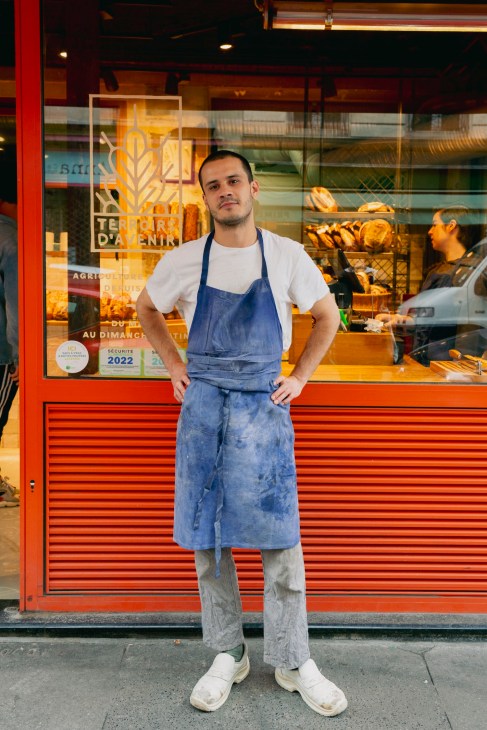
The baguette de tradition Française has made a considerable comeback in this era of people wondering whether factories – which we all agree are fine for building cars, say, or computers – might not be the best places to make food. So the additives, preservatives and general nonsense that prevail in some baguettes are derided rather than devoured by the artisan bakers of France and their millions of hungry devotees. Glance at the list of ingredients, say the bakers. If it seems too long, then it most certainly is.
The baguette is also emblematic of larger ideas that the French hold dear. It is something of a human right. It is the daily bread of the Lord’s Prayer, the staff of life. It is simple enough to be perfect for breakfast, lunch or dinner too, adept at being the vehicle to deliver your beurre sel et confiture or a happily messy slice of chaource cheese. But it will probably still emerge as the star.

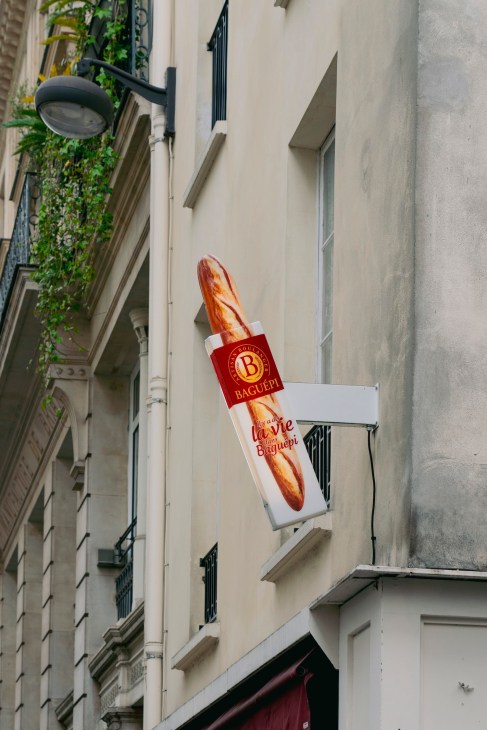
The baguette’s status as a national staple has unsurprisingly been enshrined by a country that knows what it is good at and what is good for it. In 1920, France put in place a price cap to ensure that everyone could eat it; this was only lifted in 1987 but the belief in people’s inalienable right to a baguette endures.
In recent years of energy price rises and Europe-wide inflation, the baguette has become something of an economic bellwether. News crews and researchers in France scrutinise it, while wags overseas find it mildly amusing that – of course – they’re up in arms about French sticks.

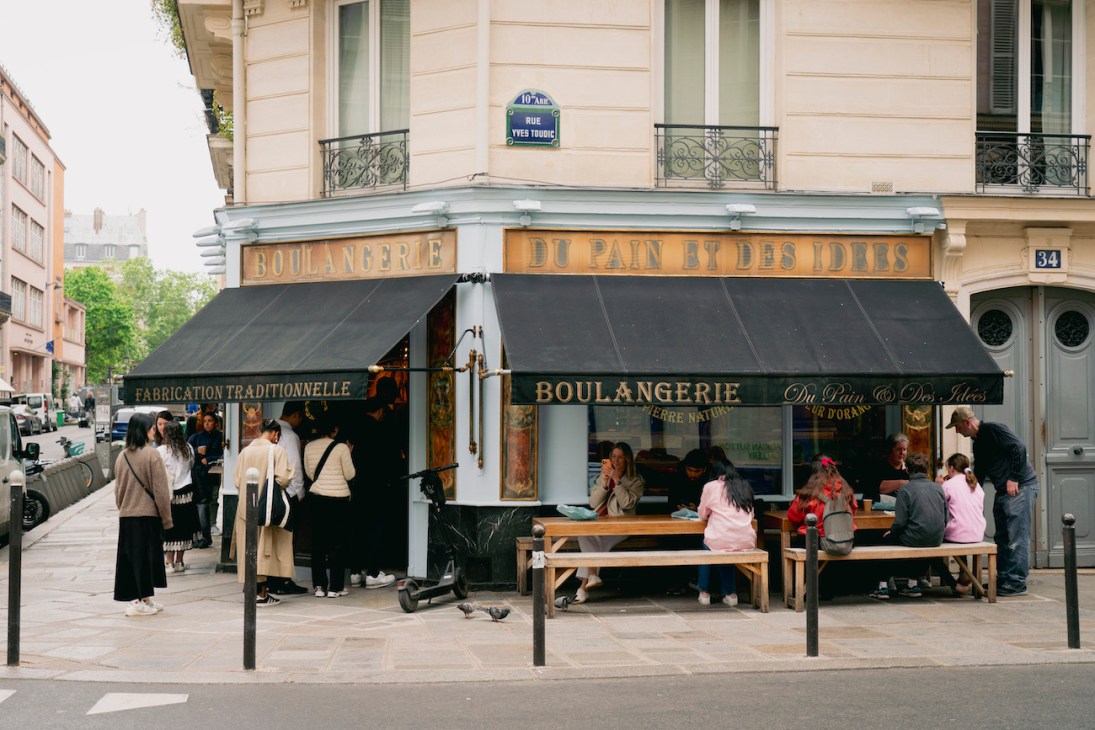
In Paris, as in the rest of the country, you can pick up a baguette for less than €1 at a supermarket. The chances are that it’ll be a slightly saccharine flute – edible but nothing special. Instead, you should visit a boulangerie and ask for un tradition. For the slightly higher cost of about €1.30, you will receive in your hand what Emmanuel Macron once described as “250g of magic and perfection” (what a relief it is that he didn’t choose to measure its qualities by length). That’s a small price to pay for the keys to an unimprovable culinary kingdom. The baguette, simple yet highly effective, is a great leveller.
Out and about in Paris, hungry and with an eye on the culture of the boulangerie – particularly the status of the baguette in a city well known for its deathless traditions and nimble transformations – Monocle walked and saw and ate and asked. Bakers told us how they bake it; customers described to us how they eat it and when. We learned about the daily ritual of the boulangerie visit to purchase le pain quotidien, that secular sacrament, that bastion, that baguette.
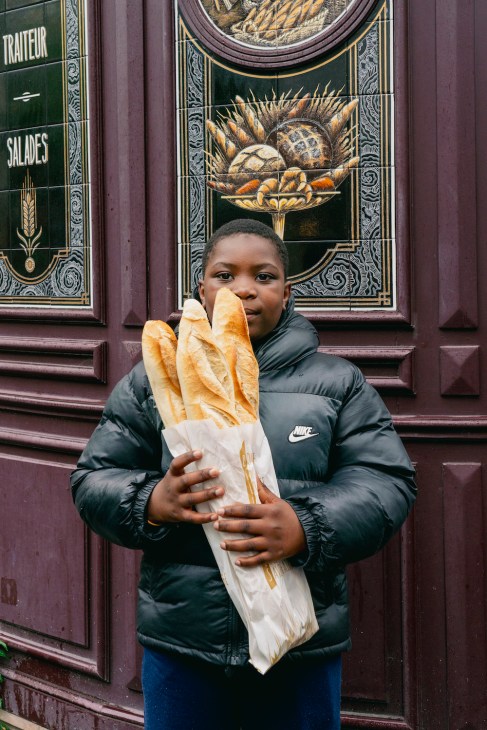
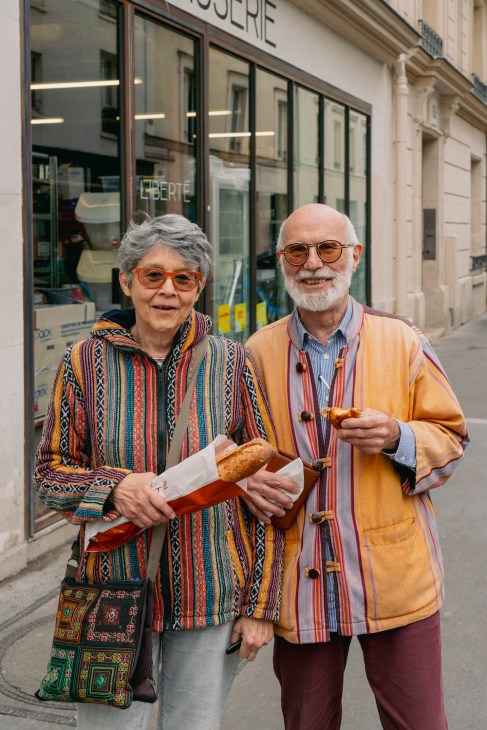

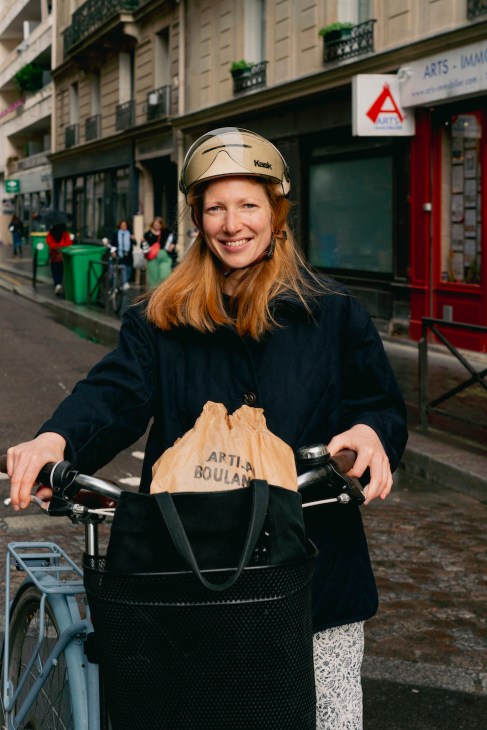
Three of the best bakeries in Paris
Du Pain et des Idées
This bread-making, bread-breaking shop was opened in 2002 in a boulangerie that dates back to 1875 by Christophe Vasseur, who is something of a saint in Paris’s cloistered world of contemporary bakers. Vasseur offers bread, patisserie and a little viennoiserie – the key to the latter being a flaky finish achieved with 30 hours of fermentation. Just 60 baguettes a day are made here for the delectation of quick-moving flute-fanciers.
dupainetdesidees.com
Union Boulangerie
Maëva Manchon and Charles Ye were studying neuroscience and finance, respectively, when they decided to quit to get their hands dusty baking bread. “We had one chance to do what we really wanted,” says Manchon. Their first bakery, which opened in 2021, is a stripped-back, naturally lit corner plot in the 9th arrondissement that satisfies office workers, well-dressed locals and cool dudes alike. (A second outpost will open later this year.) It bakes 500 baguettes a day. “I can count on one hand the days when we haven’t sold out,” says Manchon. The goods look heavenly on the bakery’s simple wooden or glass stands. “Why would we hide this stuff up on a shelf?” asks Ye. “We’re all about transparency and quality. We have nothing to hide.”
instagram.com/unionboulangerie
Terroirs d’Avenir Boulangerie
Delphine Pereira runs four bakeries in Paris for the much-admired Terroirs d’Avenir food-shop chain, which was co-founded by Alexandre Drouard and Samuel Nahon. “We have all loved baguettes since we were children,” says Drouard. “We love to eat them while they’re still warm so the crust is still crunchy and the crumb is soft and airy.”
When Monocle visits the company’s Rue du Nil bakery, the hum of machines is nowhere to be heard. “We prepare our baguettes entirely by hand, without machines for dividing or shaping,” says Drouard. “It’s a skill that has almost disappeared.” In what must be an endurance trial for the bakers, between 300 and 500 baguettes are mixed, cut and kneaded a day at every one of Terroirs d’Avenirs’ four boulangeries. We’re expecting its workout regime to hit the internet very soon.
terroirs-avenir.fr
Hollywood’s financial model is a many-tentacled, fast-evolving beast. Its true motives are kept intentionally opaque and its fortunes are often inscrutable even to those behind the studios’ gates. However, when what emerges is the world’s pre-eminent art output, understanding its economic motives is to parse a global impact that shapes everything from fashion to foreign policy and even our own neuroses.
A project’s commercial fate can remain a mystery long after its premiere. Even the creators of the 1997 smash hit Men in Black have said that they are told annually that their film has continued to “lose” money over the years, preventing them from profiting from its $600m (€509m) box office. Consider Warner Bros. Discovery CEO David Zaslav, whose 2021 compensation package totalled $246.6m (€209.3m). The following year, he shelved completed films to capitalise on tax incentives – a cursed echo of Mel Brooks’s The Producers, which in 1967 cheekily suggested that it was easier to profit from a flop than a hit. In other words, the gatekeepers of the world’s most popular artform found a way to monetise empty cinemas.
The rise of streaming has further blurred the lines by keeping viewer numbers hidden, shortening theatrical-release windows and muddying already murky accounting waters. With ballooning marketing budgets and diminishing returns, studios have been compelled to look elsewhere for steady revenue. Brand tie-ins, product placements and sprawling IP libraries can contribute as much, if not more, than ticket sales. This dynamic has transformed the kinds of films that are being made. Much of cinema’s output has split into two camps: childish tent-pole blockbusters designed to sell everything from trainers to theme-park churros, or smaller-budget releases from A24 or Blumhouse, which cost under $10m (€8.5m) and only need to occasional success to stay viable.
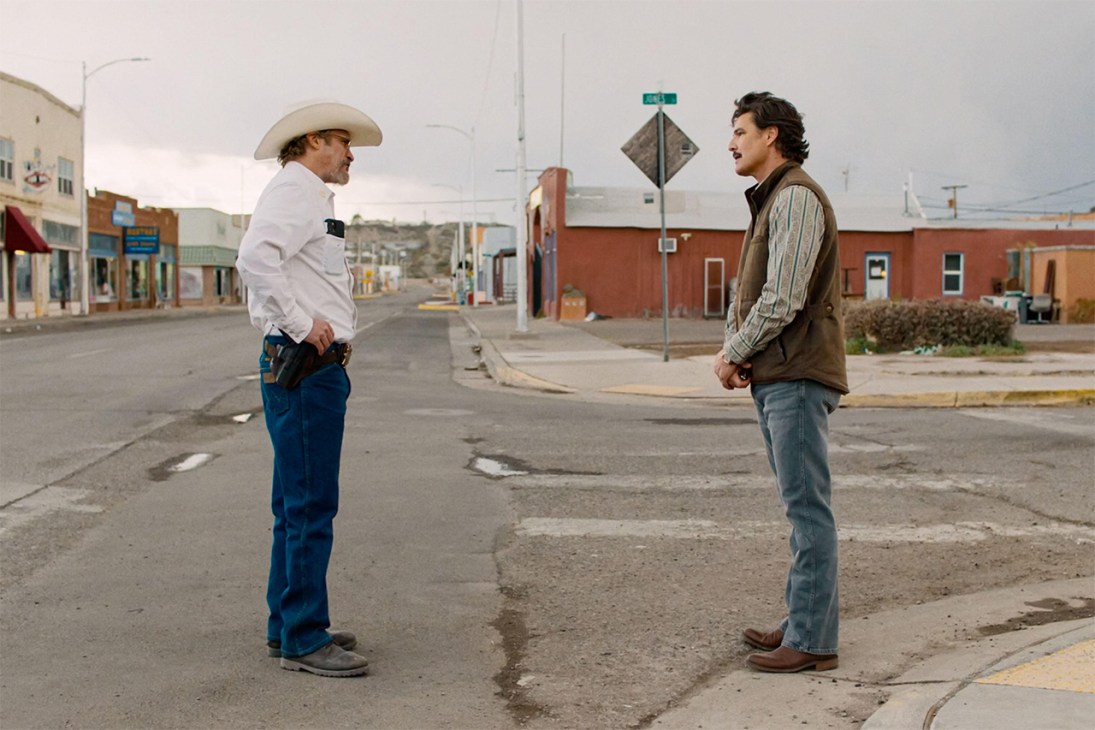
In recent years, this shift has squeezed out the mid-budget Hollywood film (generally defined as one with production costs between $10m and $100m (€8.5m and €85m). Matt Damon lamented back in 2022 that, without DVD sales, titles such as The Talented Mr Ripley, The Informant! and Behind the Candelabra, which had once been his “bread and butter”, were no longer economically viable. As a result, Damon started cropping up in franchises like Thor, and we saw him in fewer period dramas, taut thrillers and romantic comedies. Merchandisable IP became the new movie star.
But in a rare win-win situation between audiences and capitalism, change is afoot. After a series of crises – including coronavirus lockdowns, industry strikes and wildfires – there’s a new glimmer of hope. One strange perk of studios owning so many parts of the entertainment pipeline is that they can leverage synergy. For example, NBCUniversal owns a wide array of international television channels across broadcast, cable and streaming, along with podcasts, ticketing platforms and even the review website Rotten Tomatoes.
So, while a mid-budget flick might not gross as much as the latest Fast & Furious instalment, NBCUniversal can milk it for every cent across its ecosystem by placing its stars on in-house talk shows and podcasts, driving audiences to check the film’s score on Rotten Tomatoes and then directing them to buy tickets directly through its websites. Every viral moment from Jimmy Kimmel Live!, SNL or The Kelly Clarkson Show is more cash in the studio’s pot, making mid-level productions a less risky proposition. It’s a brazen confluence of art and commerce that might just resurrect the rom-com.
Certain tax incentives around the globe can also reduce production costs. Many US game shows are now being shot on the Emerald Isle, as it’s cheaper to fly contestants and hosts from California than to film on a Los Angeles sound stage owned by Fox Broadcasting Company. And while this shift is great news for those locales, it threatens swathes of working-class jobs in Hollywood, with many production workers struggling to earn a living. The result is mounting pressure to create similar tax incentives in California (Donald Trump’s “100 per cent tariff” on non-American films is a non-starter).
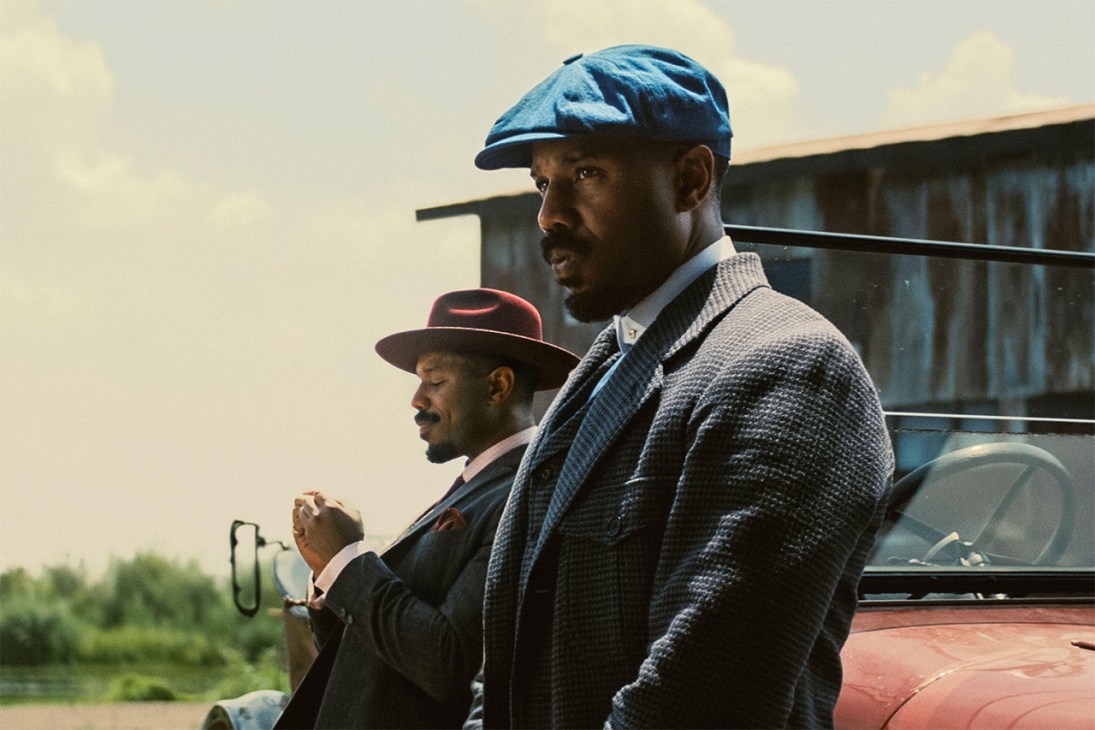
Now, with mid-budget films seen as lower risk, there’s more incentive to make them. Well-reviewed, inventive releases such as Sinners, Bridget Jones: Mad About the Boy, The Monkey and 28 Years Later have all earned ample returns on investment, proving that the box office still matters and that the industry doesn’t have to focus on how many tie-in Lego sets that it can sell. Sinners’ creator Ryan Coogler, Hollywood’s man of the moment, recently avoided the pitfalls of “Hollywood accounting” by negotiating “first-dollar gross” (a practice in which actors and producers take a percentage of gross box-office revenue from the first dollar made) rather than waiting for the studios to admit to making a profit.
The deal made by Coogler also stipulated that the rights to Sinners will eventually revert to him, rather than being absorbed into an IP vault. This ownership model prioritises theatrical revenue, with the myriad other ways the vampire flick can generate cash treated as the icing, not the cake.
Given its unpredictable nature, 21st-century media could look radically different in just a few years – but there are reasons to be optimistic. Mid-budget titles such as The Smashing Machine, Eddington and others are jostling to become this autumn’s Sinners. But audiences will need to vote with their wallets if we want more starry films made for grown-ups. So let’s ride the wave of this exciting new era and go to the cinema – at the very least, it would make Matt Damon happy.
When Donald Trump threatened to impose a 50 per cent tariff on Brazilian goods last week, the reaction in Brasília was swift and vocal (writes Bryan Harris). This economic sanction had little financial motivation; rather, as the US president made clear, the proposed punishment was a rebuke of the ongoing trial of former Brazilian president Jair Bolsonaro, who is accused of leading a coup attempt. Scores of politicians lined up to criticise the US administration for impinging Brazil’s sovereignty and putting the interests of one man above those of a nation. The choral reaction, in cities from Belo Horizonte to Belém, was in stark contrast to the markedly hushed responses of Tokyo and Seoul to recent US tariff threats. In South America, the longer-term fallout is likely to be more profound.
Washington has lost its footing on the continent just as Beijing has been deepening its diplomatic and economic relations here. China is now South America’s largest trading partner and second only to the US in Latin America as a whole. As the White House continues to alienate nations in the region with its approach to immigration, organised crime and tariffs, Beijing has a golden opportunity to push Washington out of what it naively calls its “backyard”.
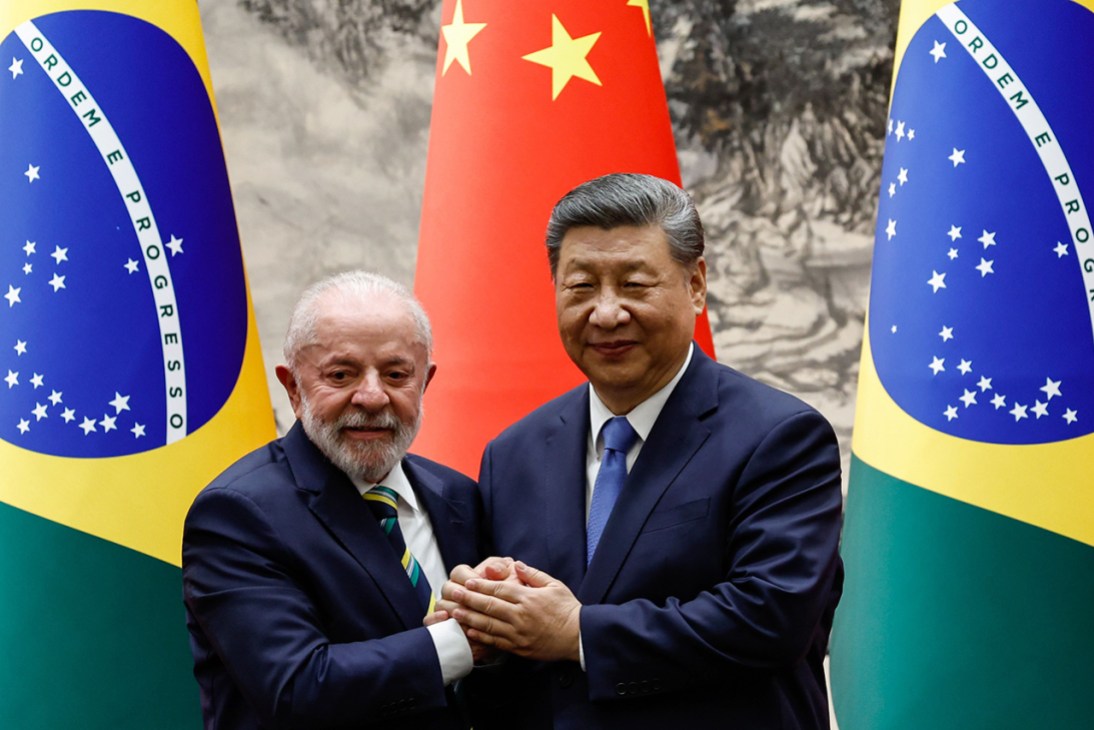
China clearly recognises the moment. In late May, Xi Jinping hosted high-level delegations from dozens of Latin American and Caribbean nations. Along with a good dose of pomp and pageantry, the Chinese leader amped up the rhetoric, highlighting how all of those assembled – himself included – were “important members of the Global South”. These were not just lofty words. Beijing also announced a new €7.7bn credit line and fresh infrastructure investment plans. Days later, it initiated visa-free travel to China for citizens of Brazil, Argentina, Chile, Peru and Uruguay. And if there was ever a question of the effectiveness of this charm offensive, it was quickly answered by Brazil’s president, Luiz Inácio Lula da Silva. “China deserves to be looked at with more affection and no prejudice,” he said.
China’s focus has primarily been on fuelling its own domestic growth by ensuring a steady supply of natural resources and raw materials – including oil, iron ore, copper, lithium and agricultural products – through co-operation with this region. But with a population of more than 650 million people, Latin America is also an attractive market for Chinese goods, especially technology and cars.
The greater game at play, however, is geopolitical. China is seeking to counterbalance US hegemony in the western hemisphere. The clearest example of this is Beijing’s growing control over some of Latin America’s largest ports: it is believed that it has built or operates 31 of them in the region. The fear in Washington is that Beijing could use these ports to disrupt US trade, shipping and logistics in the event of a conflict.
Washington has sharply intensified its rhetoric in the past six months. In February the White House practically forced Panama’s exit from China’s flagship infrastructural Belt and Road Initiative. It also hinted at trade repercussions against Colombia if it joined the scheme (which it later did). The US’s strongman posture, however, has only served to alienate political leaders. Colombia’s president, Gustavo Petro, has already engaged in heated exchanges with the White House. And in Brazil, Lula continues to show no intention of backing down in the face of Trump’s threats. In response to the 50 per cent tariffs, he said, “Brazil will not accept any form of tutelage.” Chinese businesses and the country’s government know the art of the deal here. When will the US learn?
Harris is a regular Monocle contributor. For more opinion, analysis and insight, subscribe to Monocle today.



